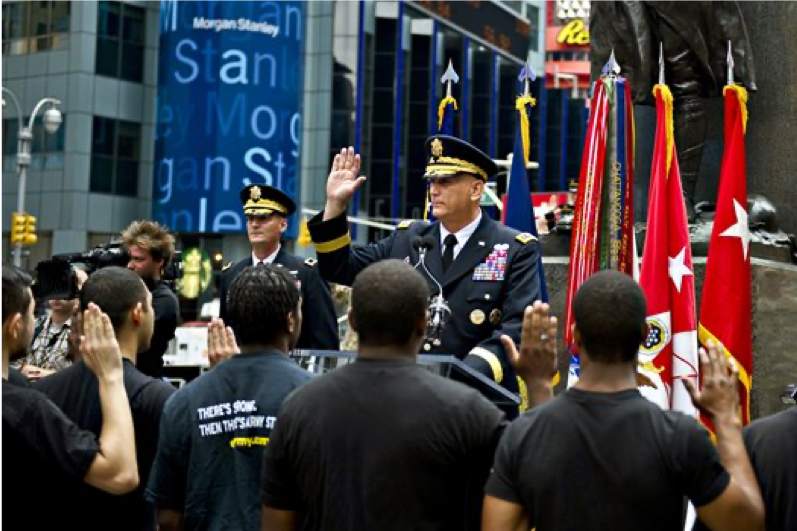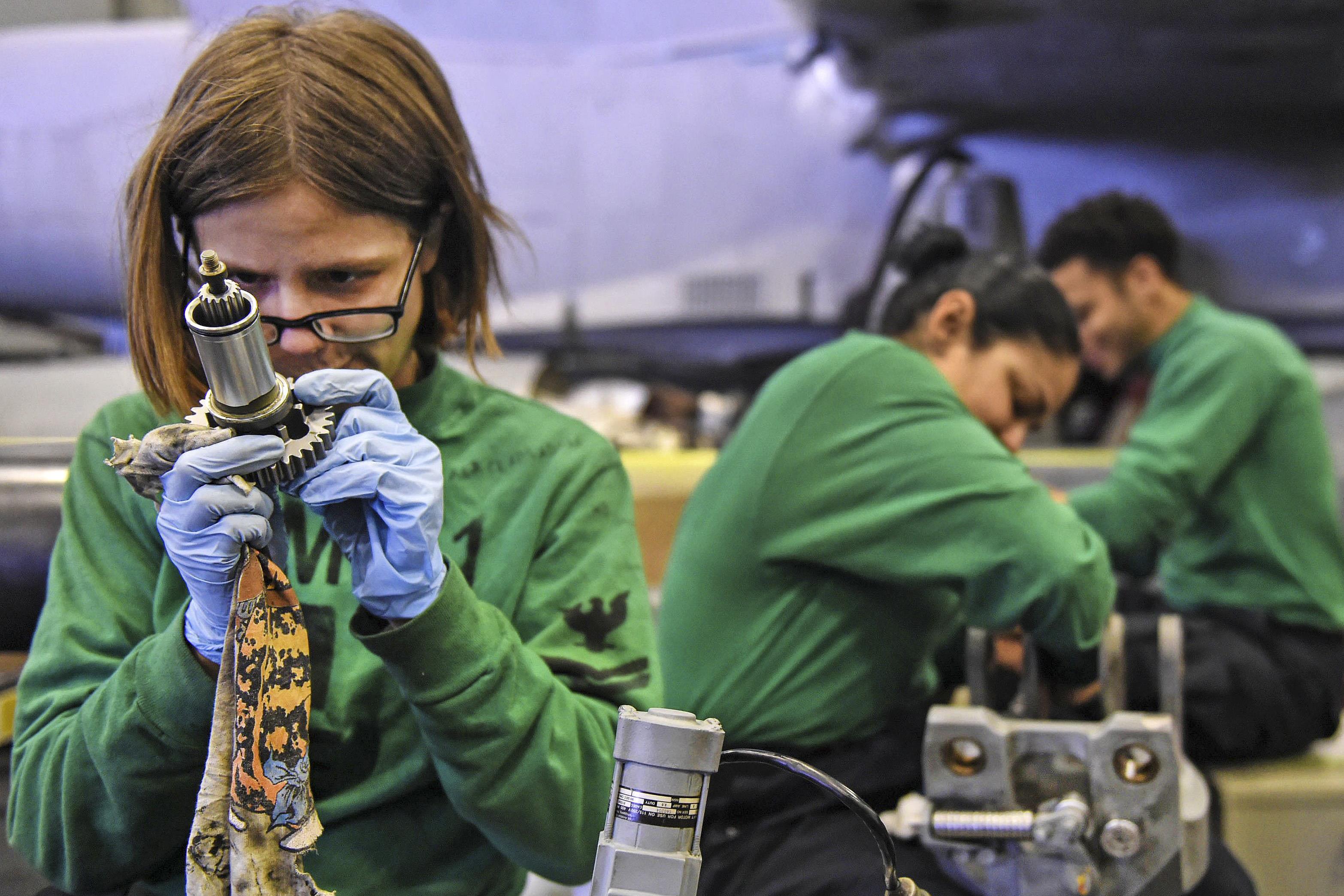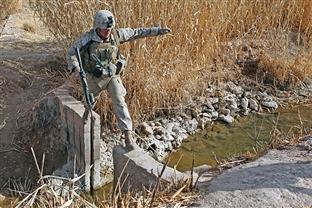
The veteran community is at a crossroads, and there is a growing divide. This is not the civilian-military divide, although that certainly still exists, but a divide within the veteran community. This divide is between those veterans who are succeeding in their post-military lives, and those who are struggling. Between those veterans who are making a positive impact on their lives, many times in spite of their experiences in the military, and those whose service is having a negative impact on their lives.
The crossroads is the group of veterans who are becoming this century’s Greatest Generation, and those veterans who are becoming this century’s Lost Generation.
Many are familiar with the post-World War II generation, the “Greatest Generation.” I’ve written before on the possibility, and even the responsibility, for veterans of today’s era to mirror the impact on our nation by that generation. In the fall of 2016, there was an excellent article in Task & Purpose outlining the potential of this generation to become the Lost Generation; a generation of combat veterans who return to a war-weary country that is simply wanting to move on from the impact of a global conflict.
The Growing Divide Reflects the Generational Diversity of the Post-9/11 Veteran
At the time this is written, conflict in Afghanistan is moving into it’s 17th year. Again, I’ve written that this is the first cross-generational conflict, but consider the senior leaders at the beginning of the war; many of them had been in the military for 25 years-plus. They were Baby Boomers, the generation that remembers the Korean War (generally) and definitely remember the Vietnam War, and possibly even served in military during that time.
The youngest Post-9/11 combat veteran might not have even joined the military yet, and the post-Millennial generation has been old enough to join the military for five years. So the Post-9/11 veteran could potentially be reflected in four generations: the Boomers, Generation X, the Millennial Generation, and Generation Z (or whatever name emerges for the post-Millennial generation). Put another way: the most senior leaders of the Post-9/11 military at the beginning of the conflict were likely born in 1949-1951. The youngest service members deploying today were born in 1999-2001. That is a span of a half a century.
The Growing Divide Is Impacted by Technology
The numbers of veterans, much less combat veterans, are nothing compared to the numbers of service members in either WWI or WWII. What is different in this generation, however, are advances in the medical field, digital technology, in warfare as a whole. More is being done with less people because the technology and the capability of today’s forces were unimagined a century ago.
In the same way, technology impacts the post-military life of the veteran today. We have a platform that amplifies and extends our voice, but it also amplifies and extends our discontent. For every story of a veteran knocking it out of the park, there are stories of veterans who are struggling: the raising suicide rate. The challenge in accessing mental health services. For every image of the veteran returning to their community and rolling up their sleeves in order to get to work, there is an image of the disgruntled veteran who just wants to be left alone and shake their fist at the sky. The successful veteran balks at the image of the struggling veteran, and the struggling veteran is angered by the attention given to the successful veteran.
Each Side of the Divide has a Responsibility
The Successful Veteran, developing into the Greatest Generation, has the responsibility of being aware that a large portion of it’s brothers and sisters are being left behind. As the lead of the cohort outdistances those that follow, there is a need to circle the formation back around and support those that are not as successful. This is happening through organizations like Team Rubicon, The Mission Continues, Team Red, White and Blue. Organizations like the Warrior Wellness Alliance, established by the George W. Bush Presidential Center, are working to connect these organizations in a comprehensive way.
The Struggling Veteran, on the other hand, has a responsibility to themselves to take advantage of the resources that are available to them. To not stay stuck in the Lost Generation, but to improve themselves and accept their role in the Greatest Generation. This is often a conscious choice, and has much to do with mindset. Again, as written before, mindset and mental health and wellness are the key to whether or not a veteran is going to succeed or struggle in their post-military life.
Transition Between Both Sides of the Divide is Possible
A veteran can start out struggling, and ultimately succeed. They can be traveling down the path of being lost, and finally get it together and become great. I’ve seen it personally in my work as a mental health counselor; the veteran is struggling with some different aspects of veteran mental health, and experience some challenges. Involvement in the criminal justice system. Homelessness. Addiction. All of the indicators of underlying, untreated mental health challenges. And, after setting things right, they get back on track, course-correct, and begin to succeed.
Conversely, the successful veteran is only one significant event away from becoming lost. When I was a program director for a homeless veterans program, I often said that there was not much of a difference between the guy running the place and the guys and gals living in the place. I am only one bad decision away from being a participant in my local Veteran court, rather than a member of the team of it. I work diligently not to make those bad decisions, but the possibility is there.
If we had a choice, we would choose success and a peaceful post-military life. What can we do to help those veterans who are struggling to be aware that they can choose the same?

The Head Space and Timing Blog is supported by the Colorado Veterans Health and Wellness Agency, a 501(c)3 Nonprofit in Colorado Springs, Colorado. The goal of the CVHWA is to provide military culturally competent mental health counseling to veterans and their spouses, regardless of characterization of discharge, time of service, or era of service. Our vision is to assist veterans to identify and remove barriers to their mental, physical, emotional, and behavioral wellness. For questions or inquiries, contact us!



1 Comment
HS&T Extra: Announcing Participation in the Bush Institute Stand-To Veteran Leadership Initiative — Head Space and Timing · April 13, 2018 at 5:28 am
[…] of all of training scenarios I participated in), our nation is fighting on another front: the growing divide between those service members who have successfully transitioned out of the military, and those who […]
Comments are closed.